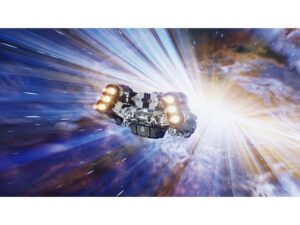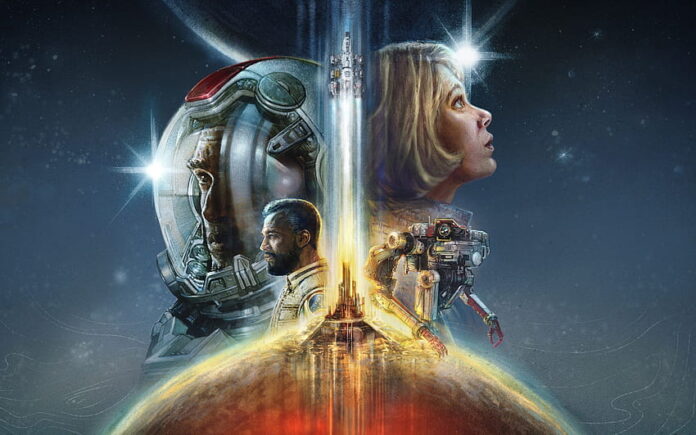To say Starfield has been highly anticipated is to undervalue the use of those words. The latest RPG from the creators of Skyrim and Fallout it promised to do for sci-fi what the Fallout series has done for the apocalypse. Offering a vast universe filled with newly inhabited planets and a combination of interstellar travel, intense gunplay, alien exploration, spaceship management, character customization, and intricate interpersonal dynamics, it does seem to deliver – on the surface. It does, however, take some time for all these layers to seamlessly blend into a coherent gaming experience and players have reported giving up, bored and annoyed long before it does.
The game’s scale is undeniably immense, with Bethesda claiming that it could take hundreds of hours to fully engage with everything it has to offer. Even after 40 hours of playtime and one New Game Plus, it becomes evident that this isn’t an exaggeration. But have they tried too much? Within the expansive universe of Starfield, players can expect moments of awe-inspiring beauty, but they may also encounter instances of monotony, repetition and disconnection within the main quest line.
The gameplay in Starfield encompasses a wide array of activities, from exploration and mining to social manipulation, resource management, crafting, cooking, and combat. These activities occur both on the surface of planets and among the stars themselves. However, one significant drawback appears to be the combat system, which is considered one of Starfield’s weaker aspects. Gun battles are central to the game’s core loop, but they often feel forced and unnecessary, leading to encounters that can be overly challenging due to an abundance of enemies.
The homogeneity of weaponry is another issue that players may encounter. While there are options for modifying and enhancing your arsenal, the guns in Starfield tend to feel disappointingly similar, lacking the satisfaction that comes from diverse and unique weapons. Additionally, the combat doesn’t offer anything groundbreaking for FPS enthusiasts, with no VATS system to add a strategic element.
For those inclined toward stealth gameplay, Starfield appears to offer limited options. Even with investment in the Stealth skill, players may find themselves quickly spotted by security guards and space pirates who invariably opt for aggression. This might lead players to prioritize other aspects of character development over stealth.
It’s all browns and greys

One common criticism of Starfield is the repetition in its environment design. Buildings on different planets tend to fall into just a few familiar categories, whether it’s the bright utopia, gritty cyberpunk, or industrial laboratory setting and sometimes even layouts of buildings, the positions of enemies and locations of targets are repeated from previous missions. It means all of the environments tend to blur together in the mind, a never-ending series of metal walkways and staircases.
Despite these shortcomings, players will still find enjoyment in the sheer scope of what’s on offer. The choice of affiliation during character creation can influence your experience, providing unique dialogue options and insights. Exploring different planets, following distortions on your scanner, and surveying the landscapes can offer moments of peaceful and immersive gameplay, enriched by a compelling soundtrack.
There’s a wealth of content in Starfield to cater to different player preferences. Whether you enjoy quests, customization of ships and outposts, interstellar combat, or simply exploring the galaxy, the game accommodates various playstyles. However, it’s important to note that the initial 40 hours may not fully showcase the game’s potential, and players may need patience to discover the aspects that resonate with them the most.
In the end, Starfield is fine. An enormous, sprawling game, with a variety of options, none of which really stand out to create an original identity. While Starfield adopts elements from various sci-fi games and references, it doesn’t surpass existing products in any particular area. Combat mechanics, mining and exploration and ship management are all okay, but have been done better elsewhere, and the Role-playing and storyline offer nothing new to the sci-fi cannon.
Given the devastating releases of some Triple-A games, Bethesda will likely be very pleased with the minimal bugs release they have garenered and perhaps will add patches and richer, more detailed, and original content further down the line. Additionally, it’s likely the game was developed knowing the amount of moderation Skyrim has received, and with the intent that it be completed by those moderators. Who knows, perhaps one day everyone will be playing heavily moderated versions? For now though, Starfield is a Science Fiction game. A good one. At the moment, it just feels like it may also, ultimately, also be a forgettable one without additional inputs.
StarField is available on XBOX and PC
- OS: Windows 10 version 21H1 (10.0.19043)
- Processor: AMD Ryzen 5 2600X, Intel Core i7-6800K.
- Memory: 16 GB RAM.
- Graphics: AMD Radeon RX 5700, NVIDIA GeForce 1070 Ti.
- DirectX: Version 12.
- Storage: 125 GB available space.
- Additional Notes: SSD Required(Solid-state Drive)


